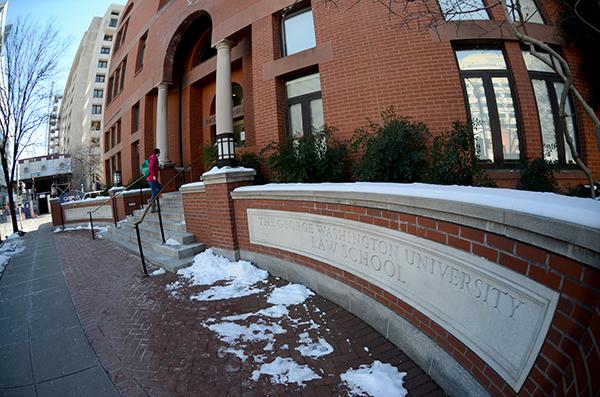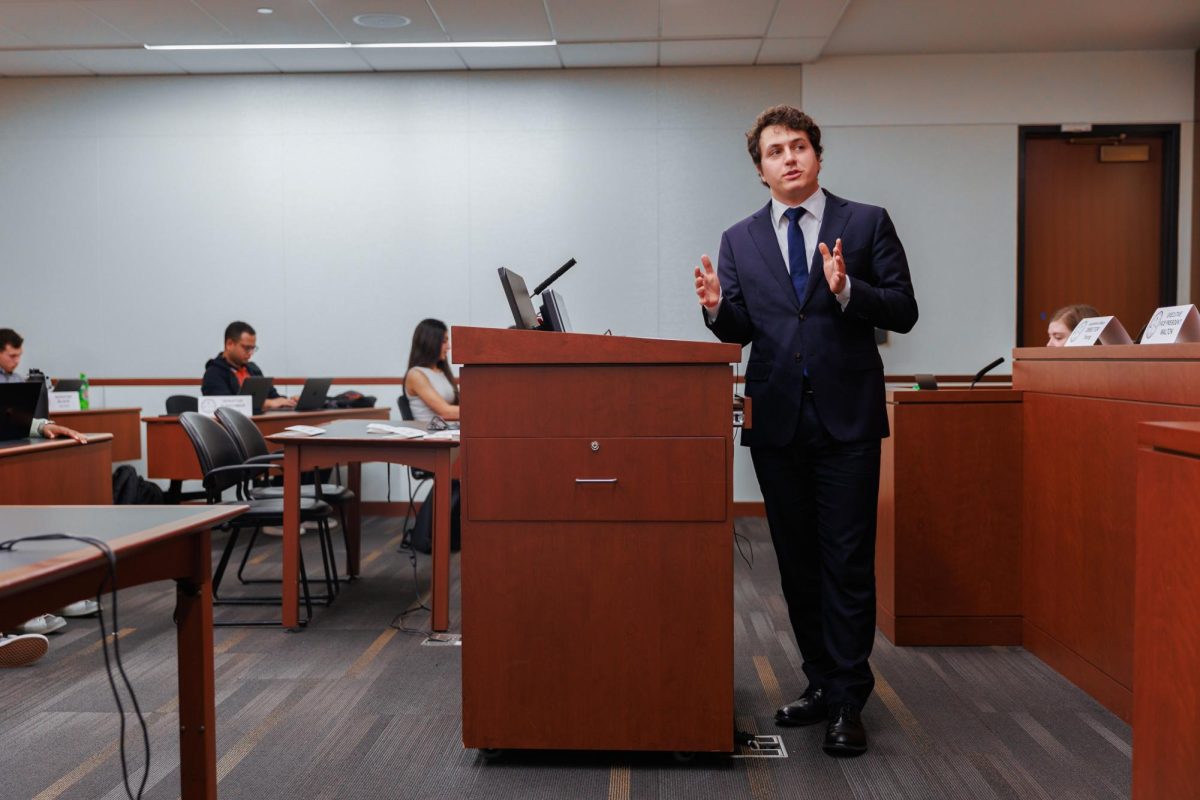The GW Law School’s selectivity took another hit this year.
The school’s admissions rate climbed to 45.19 percent, more than doubling from the acceptance rate a decade ago. It’s a smaller increase than last year’s 13-percentage-point jump, but still puts GW in the bottom half of its peer schools that have law schools.
Despite the decline in selectivity, which experts say is striking but not uncommon, the school admitted students with GPAs and LSAT scores comparable to those of its previous class.
The school also enrolled nearly 100 transfer students, which could help boost its bottom line as GW’s schools fight for limited resources.
Accepting a large transfer class of 97 students is an “interesting strategy” for growing enrollment, said Paul Campos, a law professor at the University of Colorado at Boulder and author of “Don’t Go to Law School (Unless).” Transfer students’ GPA and LSAT scores are not included the school’s averages for the year.
More than half of transfers came from American University’s Washington College of Law across town. U.S. News & World Report ranks GW’s law school No. 20 in the country and American’s at No. 72.
“It’s pretty striking because American has much lower entrance standards than GW, but what GW is doing is essentially laundering the credentials of their [second-year] class,” Campos said. “The LSAT and the GPAs of those students don’t count against GW’s stats because transfer student stats aren’t part of the calculation of what a school’s GPA and LSAT is.”
The law school received 5,952 applications this year – 591 fewer than last year, when the school received the third-most applications of all law schools across the country. Over the last five years, law schools have competed for a rapidly declining number of applicants.
Last year, GW grew its class size by about 80 students, after shrinking it for one year under former dean Paul Schiff Berman. The school, which is one of the largest law schools in the country, needed to maintain its enrollment to bring in enough tuition revenue to continue running.
But this year’s class is larger than the first-year class that the school enrolled in 2010, the last time the number of students who enrolled in law schools nationwide grew, according to the American Bar Association.
To bring in more tuition revenue without growing the size of their Juris Doctor programs, other schools have introduced new LLM or masters of law programs.
Dean Blake D. Morant, who was named one of the most influential people in legal education by National Jurist Magazine this month, introduced some similar programs during his seven-year tenure as dean at Wake Forest University.
Anna Ivey, founder of the Ivey Consulting Team and former dean of admissions at the University of Chicago Law School, said schools have to strike a delicate balance between maintaining their selectivity and producing a high-enough yield.
GW’s choice to keep growing its class size is “eye-catching,” she said, adding that it would be difficult to judge its effectiveness until graduates’ employment data is available.
“Things might be tougher for people coming out of these larger class sizes,” Ivey said. “Where schools aren’t able to maintain their historical standards is because the return on investment isn’t making as much sense anymore.”
Law schools have become somewhat more aggressive in their recruitment strategies, said Ivey, who advises students applying to law school. At Boston College, faculty will reach out to students directly, and Georgetown University has launched an interviewing program.
Liz Field, a spokeswoman for the law school, said GW’s application numbers have remained high, but declined to answer questions about admissions strategies because it could hurt the school’s position in the market.
“We are fortunate that applications to GW Law have consistently been above the national average and this year was no different,” she said in a statement.
At the University of Southern California Gould School of Law, which is tied with GW at No. 20 in the U.S. News & World Report top law school rankings, the admissions office is offering to waive the application fee for anyone who applies to the school by Feb. 1. David Kirschner, director of admissions, said the school hoped the waiver might incentivize more students to apply and grow Gould’s applicant pool, and that it had helped grow the pool last year.
The school increased its class size this year when it hadn’t planned to do so, Kirschner said. He declined to comment on how a larger class could affect the school’s budgeting needs, but said a large class is important for ensuring a diverse array of opinions and backgrounds in the classroom.
To attract more students despite the national downturn, Gould has tried to update how it recruits students with more events.
“We’ve added panel presentations to a greater extent to our recruiting calendar,” he said. “They’re letting us get our message out in front of a better cross-section of students.”







